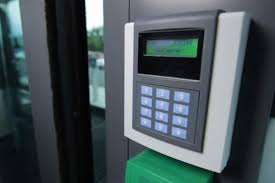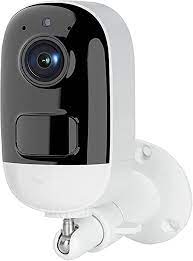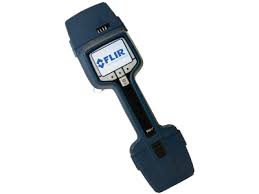Electronic Access Control Systems: Enhancing Security and Efficiency
In today’s fast-paced world, security is a top concern for individuals and organizations alike. Whether it’s protecting valuable assets, ensuring the safety of employees, or maintaining the privacy of sensitive information, having a robust security system in place is essential. This is where electronic access control systems come into play.
Electronic access control systems provide a secure and efficient way to manage access to buildings, rooms, or specific areas within a facility. Unlike traditional lock and key systems, electronic access control systems utilize advanced technology to regulate entry and monitor activities. Let’s delve deeper into the benefits and functionalities of these cutting-edge security solutions.
Enhanced Security: One of the primary advantages of electronic access control systems is their ability to enhance security levels significantly. These systems use various authentication methods such as PIN codes, key cards, biometric scans (fingerprint or iris recognition), or even facial recognition technology to verify an individual’s identity before granting access. This ensures that only authorized personnel can enter restricted areas, minimizing the risk of unauthorized entry or potential security breaches.
Access Management: Electronic access control systems offer unparalleled flexibility in managing access rights. With these systems, administrators have complete control over who can enter specific areas at certain times. Access privileges can be easily assigned or revoked for individuals or groups with just a few clicks on a centralized management software interface. This allows organizations to implement customized access policies based on roles and responsibilities while maintaining detailed records of user activities.
Audit Trail and Reporting: Another significant advantage of electronic access control systems is their ability to generate comprehensive audit trails and reports. Every entry attempt is logged in real-time, including successful entries as well as failed attempts. This data provides valuable insights into who accessed certain areas at any given time, allowing for accurate tracking and investigation if any incidents occur.
Integration Capabilities: Electronic access control systems are designed to integrate seamlessly with other security solutions such as CCTV cameras, intrusion detection systems, and alarm systems. This integration allows for a more comprehensive and holistic security approach. For example, when an unauthorized access attempt is detected, the system can trigger an alarm and send real-time alerts to security personnel, enabling them to respond quickly and effectively.
Efficiency and Convenience: Electronic access control systems offer unmatched convenience compared to traditional lock and key systems. No more worries about lost or stolen keys that require costly rekeying of locks. With electronic access control systems, lost or stolen credentials can be easily deactivated, ensuring that only authorized individuals have access. Additionally, these systems eliminate the need for physical keys altogether, making it easier to manage large numbers of keys and reducing administrative overhead.
Scalability: Whether you have a small office or a large enterprise with multiple locations, electronic access control systems can be easily scaled to meet your needs. These systems are highly flexible and can accommodate changes in organizational structure or physical layout without significant modifications. This scalability ensures that your security system can grow alongside your business.
In conclusion, electronic access control systems offer a wide range of benefits including enhanced security, efficient access management, detailed audit trails, seamless integration with other security solutions, convenience, and scalability. By implementing these advanced security solutions, individuals and organizations can protect their assets, ensure the safety of their premises and personnel while streamlining operations for improved efficiency. Stay one step ahead in today’s ever-evolving security landscape with electronic access control systems.
7 Essential Tips for Electronic Access Control Systems
- Ensure that your access control system is regularly updated with the latest security protocols and software patches.
- Utilize a multi-factor authentication process for added security.
- Implement an audit trail to monitor user activity and detect any unauthorized access attempts.
- Use strong passwords, change them frequently, and never share them with anyone else.
- Restrict physical access to the system’s hardware components to authorized personnel only.
- Set up an emergency plan in case of a power outage or other technical issue that may affect the system’s functioning or security measures taken by personnel in charge of it .
- Make sure your electronic access control system works well with other security systems such as CCTV cameras, fire alarms, etc., for better overall protection of your premises
Ensure that your access control system is regularly updated with the latest security protocols and software patches.
Stay Ahead of Security Threats: Regularly Update Your Access Control System
In the realm of electronic access control systems, ensuring the safety and integrity of your security infrastructure is paramount. While implementing an access control system is a significant step towards enhancing security, it’s equally important to regularly update the system with the latest security protocols and software patches. This simple but crucial tip can help you stay ahead of potential security threats and keep your premises secure.
Technology is constantly evolving, and so are the tactics used by malicious actors to exploit vulnerabilities in security systems. By regularly updating your access control system, you can ensure that any known vulnerabilities or weaknesses are addressed promptly. Manufacturers of access control systems often release updates and patches to address newly discovered vulnerabilities or to improve system performance.
Updating your access control system involves installing the latest software updates provided by the manufacturer. These updates may include bug fixes, performance enhancements, or most importantly, critical security patches. These patches are designed to fix vulnerabilities that could potentially be exploited by hackers or unauthorized individuals attempting to gain access to your premises.
By neglecting regular updates, you run the risk of leaving your system exposed to known security vulnerabilities. Hackers are constantly on the lookout for outdated systems as they present an easy target for unauthorized entry or data breaches. Outdated software versions may have exploitable weaknesses that hackers can leverage to bypass security measures.
Regularly updating your access control system not only ensures that you have the latest security protocols in place but also helps maintain compatibility with other components of your overall security infrastructure. This includes integration with CCTV cameras, alarm systems, or other third-party applications that work in conjunction with your access control system.
To make sure you don’t miss out on critical updates, it’s advisable to establish a maintenance schedule for your access control system. This schedule should include regular checks for software updates provided by the manufacturer and a plan for implementing those updates promptly.
Additionally, consider working closely with your access control system provider or security integrator to stay informed about any new releases, patches, or updates. They can provide valuable insights and guidance on the best practices for keeping your system up to date.
In conclusion, regularly updating your access control system with the latest security protocols and software patches is an essential step in maintaining a robust and secure security infrastructure. By doing so, you can effectively mitigate potential vulnerabilities and stay one step ahead of evolving security threats. Remember, staying proactive in updating your access control system is a small investment that goes a long way in safeguarding your premises, assets, and personnel.
Utilize a multi-factor authentication process for added security.
When it comes to securing access to sensitive areas or valuable assets, relying on a single authentication method may not be enough. This is where a multi-factor authentication process can significantly enhance the security of electronic access control systems.
Multi-factor authentication (MFA) adds an extra layer of protection by requiring individuals to provide multiple forms of identification before gaining access. It combines two or more independent factors such as something the user knows (e.g., a password or PIN), something the user has (e.g., a key card or smartphone), and something the user is (e.g., biometric data like fingerprints or facial recognition).
By implementing MFA in electronic access control systems, organizations can ensure that only authorized personnel with valid credentials can enter restricted areas. Here are some key benefits of utilizing a multi-factor authentication process:
- Enhanced Security: MFA significantly strengthens security by making it more difficult for unauthorized individuals to gain access. Even if one factor is compromised, such as a stolen key card or a hacked password, the additional layers of authentication provide an extra barrier against unauthorized entry.
- Protection Against Credential Theft: Passwords and key cards can be lost, stolen, or shared among individuals. By adding additional factors like biometric scans, MFA reduces the risk of credential theft and ensures that only authorized users can gain entry.
- Deterrence for Unauthorized Access Attempts: The presence of MFA acts as a deterrent for potential intruders. Knowing that multiple forms of identification are required makes it much more challenging for unauthorized individuals to bypass the system successfully.
- Compliance with Industry Regulations: Many industries have strict regulatory requirements regarding data protection and physical security. Implementing MFA in electronic access control systems helps organizations meet these compliance standards and demonstrate their commitment to safeguarding sensitive information.
- Peace of Mind: Utilizing MFA provides peace of mind for both individuals and organizations. Knowing that access to restricted areas is protected by multiple layers of authentication instills confidence in the security measures in place.
To implement a multi-factor authentication process effectively, it is important to choose a system that supports various authentication methods and integrates seamlessly with your existing access control infrastructure. Additionally, user education and awareness about the importance of MFA and the proper use of credentials are crucial for its successful implementation.
In conclusion, utilizing a multi-factor authentication process adds an extra layer of security to electronic access control systems. By requiring individuals to provide multiple forms of identification, organizations can significantly reduce the risk of unauthorized access attempts and protect their valuable assets and sensitive information. Implementing MFA is a proactive step towards strengthening security measures and ensuring the utmost protection for your premises and personnel.
Implement an audit trail to monitor user activity and detect any unauthorized access attempts.
Implementing an Audit Trail for Enhanced Security with Electronic Access Control Systems
When it comes to electronic access control systems, ensuring the highest level of security is paramount. One valuable tip to enhance security is to implement an audit trail feature within your access control system. An audit trail serves as a digital record of user activity, allowing you to monitor and track every entry attempt and access event within your premises.
By implementing an audit trail, you gain the ability to detect any unauthorized access attempts promptly. This feature provides valuable insights into who accessed specific areas at any given time, enabling you to identify potential security breaches or suspicious activities. With a comprehensive record of user activity, you can effectively investigate incidents and take appropriate action if necessary.
The audit trail feature also helps in maintaining compliance with regulatory requirements. Many industries have strict regulations regarding data privacy and security. By having a detailed record of user activity, you can demonstrate compliance during audits or investigations.
To fully leverage the benefits of an audit trail, it is crucial to choose an electronic access control system that offers robust reporting capabilities. Look for systems that provide customizable reports with relevant information such as date and time stamps, user identities, and access locations. These reports should be easily accessible through a centralized management software interface for convenience.
Regularly reviewing the audit trail reports is essential for proactive security management. By analyzing patterns and identifying any unusual activities or access patterns, you can take preventive measures before potential security threats escalate.
In addition to detecting unauthorized access attempts, an audit trail can also be used for employee accountability purposes. It encourages responsible behavior among employees by creating transparency and awareness that their actions are being monitored and recorded.
Remember that implementing an audit trail alone is not enough; it should be part of a comprehensive security strategy. Combine it with other best practices such as strong authentication methods (e.g., biometric scans or multi-factor authentication), regular user credential reviews, and ongoing staff training on security protocols.
In conclusion, implementing an audit trail within your electronic access control system is a vital step towards enhancing security. By monitoring user activity and detecting unauthorized access attempts, you can proactively protect your premises, assets, and sensitive information. Choose a system that offers robust reporting capabilities and regularly review the audit trail reports to ensure a secure environment for your organization.
Use strong passwords, change them frequently, and never share them with anyone else.
Securing Your Electronic Access Control Systems: The Power of Strong Passwords
In an increasingly digital world, where access to sensitive areas is managed through electronic systems, the importance of strong passwords cannot be overstated. Whether it’s accessing your personal accounts or protecting critical business assets, using strong passwords is a fundamental step towards safeguarding your electronic access control systems.
The first rule of thumb when it comes to passwords is to make them strong and unique. A strong password typically consists of a combination of upper and lowercase letters, numbers, and special characters. Avoid using easily guessable information like your name, birthdate, or common words. Instead, opt for a random sequence of characters that is difficult for others to guess.
Equally important is changing your passwords frequently. Regularly updating your passwords adds an extra layer of security by minimizing the risk of unauthorized access. Aim to change your passwords every few months or as recommended by the system provider.
It’s crucial to remember that sharing passwords with others can compromise the security of your electronic access control systems. Even if you trust someone implicitly, it’s best practice not to share your passwords with anyone else. Each individual should have their own unique credentials to ensure accountability and traceability within the system.
To manage multiple strong passwords effectively, consider using a password manager tool. These tools securely store and generate complex passwords for you, eliminating the need to remember them all while ensuring their strength and uniqueness.
Additionally, enable multi-factor authentication (MFA) whenever possible. MFA adds an extra layer of security by requiring users to provide additional verification beyond just a password. This could include biometric scans (such as fingerprints), one-time passcodes sent via SMS or email, or hardware tokens.
Lastly, be cautious when entering your password on shared or public devices. Always ensure you are using a trusted device and network when accessing your electronic access control systems remotely.
By following these simple but essential tips—using strong and unique passwords, changing them regularly, never sharing them with others, and enabling multi-factor authentication—you significantly enhance the security of your electronic access control systems. Protecting your assets and maintaining the integrity of your electronic security infrastructure is a responsibility that should never be taken lightly. Stay vigilant, stay secure.
Restrict physical access to the system’s hardware components to authorized personnel only.
Securing Your Electronic Access Control System: Restricting Physical Access to Authorized Personnel Only
When it comes to electronic access control systems, ensuring the security of the hardware components is just as important as protecting the data and access privileges within the system. One crucial tip to keep in mind is to restrict physical access to the system’s hardware components exclusively to authorized personnel.
Why is this important? Let’s delve into the reasons:
- Prevent Unauthorized Tampering: By restricting physical access, you minimize the risk of unauthorized individuals tampering with or compromising the system’s hardware components. This includes devices such as control panels, card readers, biometric scanners, and wiring infrastructure. Unauthorized tampering can lead to system malfunctions or even allow intruders to bypass security measures.
- Safeguard Against Physical Attacks: Limiting physical access helps protect your electronic access control system from physical attacks. For example, malicious individuals may attempt to disable or damage hardware components in an effort to gain unauthorized entry or disrupt system operations. By restricting access, you reduce the likelihood of such attacks and enhance overall system resilience.
- Maintain System Integrity: Allowing only authorized personnel to handle and maintain the hardware components ensures that proper protocols are followed during maintenance and upgrades. This helps maintain the integrity of your electronic access control system and reduces the risk of accidental errors or misconfigurations that could compromise its functionality.
- Minimize Human Error: Restricting physical access also minimizes the potential for human error. Only trained and authorized personnel should have direct contact with the hardware components, reducing the chances of accidental damage or incorrect handling that could impact system performance.
To implement this tip effectively, consider implementing these best practices:
a) Establish Access Control Policies: Clearly define who has authorized access rights to your electronic access control system’s hardware components. Create policies that outline roles and responsibilities for handling these components.
b) Implement Physical Security Measures: Use physical security measures such as locked cabinets, secure rooms, or access control systems with biometric authentication to restrict entry to the hardware components. This ensures that only authorized personnel can physically interact with the system.
c) Regularly Review Access Permissions: Periodically review and update access permissions to align with organizational changes. Remove access rights for individuals who no longer require them and ensure that new personnel are granted appropriate access.
d) Train Authorized Personnel: Provide comprehensive training to authorized personnel on how to handle and maintain the system’s hardware components correctly. This includes proper installation, troubleshooting, and adherence to security protocols.
By following these practices and restricting physical access to your electronic access control system’s hardware components, you can enhance the overall security and integrity of your system. Protecting both the digital aspects and physical infrastructure ensures a robust defense against potential threats, safeguarding your organization’s assets, data, and personnel.
Set up an emergency plan in case of a power outage or other technical issue that may affect the system’s functioning or security measures taken by personnel in charge of it .
Setting up an Emergency Plan for Electronic Access Control Systems
When it comes to electronic access control systems, ensuring their smooth functioning and maintaining the security measures they provide is crucial. However, unforeseen events such as power outages or technical issues can sometimes disrupt these systems, potentially compromising the security of your premises. To mitigate such risks, it is essential to have a well-thought-out emergency plan in place. Let’s explore the importance of an emergency plan and how it can safeguard your access control system.
Firstly, identify potential vulnerabilities: Start by assessing the vulnerabilities that may arise during a power outage or technical malfunction. Consider factors such as backup power sources, network connectivity, and communication channels between system components. By identifying these vulnerabilities beforehand, you can develop targeted strategies to address them.
Ensure backup power supply: Power outages are one of the most common causes of disruption in electronic access control systems. To counter this, ensure that your system has a reliable backup power supply in place. This could include uninterruptible power supplies (UPS) or generators capable of providing sufficient power to keep critical components operational during an outage. Regularly test these backup systems to ensure they are functioning correctly.
Establish clear protocols: Clearly define protocols for handling emergencies related to your access control system. Designate responsible personnel who will be in charge during such situations and outline their roles and responsibilities. Establish communication channels and procedures for reporting issues promptly and efficiently.
Train personnel: Proper training is essential for personnel responsible for managing the access control system during emergencies. Ensure that they are well-versed in troubleshooting techniques and have a solid understanding of the system’s operation. Conduct regular training sessions to keep them updated on any changes or upgrades made to the system.
Implement manual override mechanisms: In case of a complete system failure or prolonged outage, having manual override mechanisms can be invaluable. These mechanisms allow authorized personnel to manually grant access or secure areas temporarily until the system is restored. Consider employing physical keys, manual locks, or alternative access control methods as a backup solution.
Regular system maintenance: Preventive maintenance is crucial to minimize the risk of technical issues and ensure the smooth functioning of your access control system. Regularly inspect and service all components, including power sources, network connections, and access control devices. This proactive approach can help identify potential problems before they escalate into emergencies.
Test the emergency plan: Periodically test your emergency plan to evaluate its effectiveness and identify any areas for improvement. Conduct simulated power outages or technical failures to assess how well your personnel respond and if the backup systems function as intended. Use these tests as opportunities to refine your emergency plan further.
By setting up an emergency plan for your electronic access control system, you can effectively manage unforeseen events that may disrupt its functioning or compromise security measures. Remember to regularly review and update the plan as needed to adapt to changes in technology or organizational requirements. With a well-prepared emergency plan in place, you can ensure the continued security of your premises even during challenging situations.
Make sure your electronic access control system works well with other security systems such as CCTV cameras, fire alarms, etc., for better overall protection of your premises
When it comes to securing your premises, having a robust electronic access control system is crucial. However, it’s equally important to ensure that your access control system works seamlessly with other security systems in place. Integrating your electronic access control system with CCTV cameras, fire alarms, and other security solutions can provide you with better overall protection.
By integrating your electronic access control system with CCTV cameras, you can enhance surveillance capabilities. When an access event occurs, the corresponding camera can be triggered to record the activity, providing visual evidence of who entered or exited a specific area. This integration allows for real-time monitoring and quick identification of any suspicious activities or unauthorized entry attempts.
Incorporating fire alarm systems into your access control system is essential for prompt response in case of emergencies. By linking these systems together, you can automatically unlock doors in the event of a fire alarm activation. This ensures a safe and efficient evacuation process by eliminating the need for manual unlocking and preventing delays that could potentially put lives at risk.
Integrating your electronic access control system with other security systems also enables centralized management and streamlined operations. A unified platform allows administrators to monitor and manage multiple security components from a single interface. This simplifies tasks such as granting or revoking access privileges, reviewing audit trails, and generating comprehensive reports.
Furthermore, integrating different security systems provides valuable data correlation capabilities. For instance, when an unauthorized access attempt is detected by the electronic access control system, it can trigger an alert on the CCTV system to focus on that specific area. This correlation between different systems enhances situational awareness and enables faster response times.
In summary, ensuring that your electronic access control system works well with other security systems such as CCTV cameras and fire alarms is vital for comprehensive protection of your premises. The integration of these systems enhances surveillance capabilities, facilitates efficient emergency response procedures, simplifies management tasks, and enables better data correlation for improved overall security. Invest in an integrated security solution to maximize the effectiveness of your electronic access control system and safeguard your premises against potential threats.




